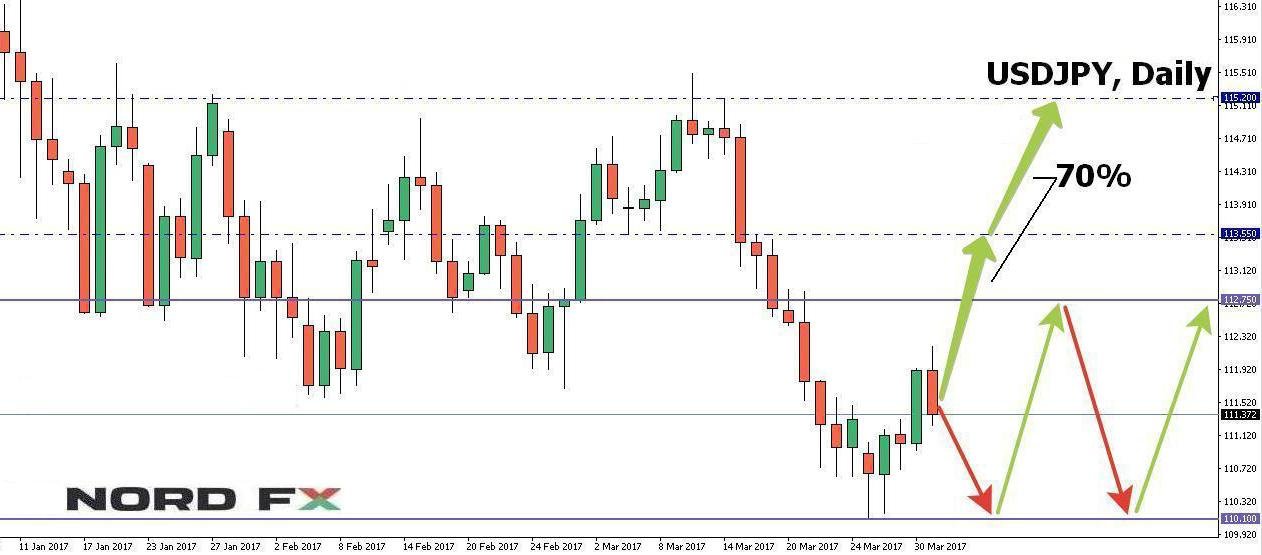First, a review of last week’s forecast:
- The forecast for EUR/USD proved to be 100% accurate. Recall that the main scenario we laid out was the following: the pair’s continued growth was seen to be entirely possible albeit negligible in magnitude. Once it reached the 1.0850-1.0900 area, it would U-turn to southwards. We named 1.0650 as the nearest support. Everything occurred exactly as described: reaching the height of 1.0905 as early as Monday, the pair turned sharply and flying with a little breather 255 points, finished the week at the mark specified by experts - 1.0650;
- In the forecast for GBP/USD, analysts pointed out that the pair may stay in the 1.2420-1.2570 channel for a while. In fact, the borders of this channel ended up being 45 points wider: within a couple of weeks, the pair ranged from the minimum of 1.2375 to 1.2615 at the maximum, ending the session near a strong medium-term level of resistance in the 1.2550-1.2570 zone;
- Giving the forecast for USD/JPY, half of the experts supported the pair’s fall, and the other half its growth. That was exactly what happened. Having broken the strong support at 111.60 two weeks ago, the pair sank to 110.10 last week. It then turned around and returned to the very same support level, which now put a different hat on and became a resistance level;
- Assessing the behaviour of the pair USD/CHF last week, experts agreed that it would once again mirror the graph of the EUR/USD fluctuations. Once again, they were right: dropping to 0.9813 on Monday, the pair then turned and, having overcome 217 points, reached the height of 1.0030 on Friday.
Forecast for the coming week:
Summarizing the views of a number of analysts from leading banks and brokerage firms, as well as the forecasts made on the basis of a wide variety of technical and graphical analysis methods, we can say the following:
- EUR/USD. More than 80% of experts vote for the pair displaying a downwards trend, indicating the 1.0600 support as the nearest target. After that, the pair is likely to descend to 1.0525, and then even lower to the lows of February and March around 1.0495. At the same time, about one third of oscillators indicate that the pair is oversold. Connected with this there might be a temporary correction and an upwards rebound of the pair to the 1.0750-1.0775 zone. This is confirmed by the readings of graphic analysis on H4. The existence of negative expectations for the US dollar is also associated with changes in the United States employment rates(NFP), the data for which will be announced on Friday, 7 April. Thus, according to some forecasts, the number of new jobs outside the agricultural sector could diminish from 235K to 175K;
- Whilst the opinions of analysts and technical analysis on the previous pair mostly coincide, their discrepancy is jarring when it comes to GBP/USD: more than 90% of indicators point to the growth of the pair, whilst over 80% of experts continue to insist on its fall. The trends for this pair will most likely be determined by rumours about the terms of the UK’s exit from the EU for a quite some time. The support levels for next week are 1.2375, 1.2200 and 1.2110, whilst the resistance levels are 1.2675 and 1.2725;
- Predicting the future of USD/JPY, both trend indicators and oscillators alongside with graphical analysis on D1 point to the pair’s lateral movement in the 110.10-112.75 channel. Analysts, however, display a steady rise in bullishness amongst their ranks: at the time of writing the forecast the proportion of bull supporters has already exceeded 70%. 113.55 and 115.20 are named as the main targets;

- Supporters of the growth of USD/CHF now also exceed 70% of analysts: they name 1.0100 as the short-term target, with the next one being 1.0170. As for graphical analysis, its readings on H4 show that the nearest support level is 0.9980, followed by 0.9950, and that the week’s bottom-point is in the 0.9920 area.
Roman Butko, NordFX
Go Back Go Back
